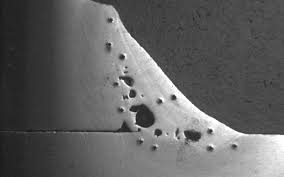What is Porosity in Welding: Key Factors and Their Impact on Weld High Quality
What is Porosity in Welding: Key Factors and Their Impact on Weld High Quality
Blog Article
Understanding Porosity in Welding: Exploring Reasons, Effects, and Prevention Strategies
Porosity in welding is a consistent challenge that can substantially impact the high quality and stability of welds. As professionals in the welding industry are well mindful, comprehending the reasons, impacts, and avoidance methods associated with porosity is vital for achieving durable and reputable welds. By diving right into the origin of porosity, examining its destructive impacts on weld top quality, and exploring efficient avoidance techniques, welders can boost their knowledge and skills to generate top quality welds continually. The intricate interaction of variables adding to porosity needs a thorough understanding and a proactive technique to make certain successful welding results.
Common Root Causes Of Porosity
Contamination, in the kind of dust, oil, or rust on the welding surface, develops gas pockets when heated up, leading to porosity in the weld. Improper securing happens when the protecting gas, generally utilized in processes like MIG and TIG welding, is unable to fully secure the molten weld swimming pool from responding with the surrounding air, resulting in gas entrapment and subsequent porosity. Additionally, poor gas coverage, often due to inaccurate circulation rates or nozzle positioning, can leave parts of the weld unguarded, permitting porosity to develop.
Results on Weld Quality
The existence of porosity in a weld can dramatically compromise the total high quality and honesty of the bonded joint. Porosity within a weld creates spaces or dental caries that weaken the framework, making it extra susceptible to breaking, rust, and mechanical failing. These gaps serve as anxiety concentrators, minimizing the load-bearing ability of the weld and increasing the likelihood of premature failure under applied tension. Furthermore, porosity can also act as potential sites for hydrogen entrapment, additional worsening the deterioration of the weld's mechanical homes.
Moreover, porosity can impede the effectiveness of non-destructive screening (NDT) strategies, making it testing to identify various other flaws or interruptions within the weld. This can cause significant security issues, specifically in essential applications where the architectural stability of the welded components is critical.

Prevention Techniques Review
Given the harmful impact of porosity on weld high quality, effective prevention strategies are essential to maintaining the structural stability of bonded joints. One of the main avoidance methods is extensive cleansing of the base products prior to welding. Impurities such as oil, oil, corrosion, and moisture can add to porosity, so guaranteeing a clean job surface is essential. Appropriate storage space of welding consumables in dry problems is likewise crucial to protect against wetness absorption, which can lead to gas entrapment during welding. In addition, choosing the ideal welding specifications, such as voltage, current, and travel rate, can help decrease the risk of porosity development. Ensuring appropriate shielding gas flow and insurance coverage is one more essential prevention strategy, as insufficient gas protection can cause atmospheric contamination and porosity. Correct welder training and certification are vital for applying preventative measures efficiently and constantly. By including these prevention techniques into welding methods, the event of porosity can be significantly decreased, resulting in more powerful and extra reliable welded joints.
Significance of Correct Protecting
Appropriate shielding in welding plays a crucial duty in avoiding atmospheric contamination and ensuring the stability of bonded joints. Securing gases, such as argon, helium, or a blend of both, are generally used to shield the weld swimming pool from reacting helpful site with elements airborne like oxygen and nitrogen. When these responsive components enter into contact with the hot weld swimming pool, they can create porosity, leading to weak welds with minimized mechanical residential properties.

Insufficient shielding can result in various flaws like porosity, spatter, and oxidation, compromising the structural stability of the bonded joint. Adhering to correct securing methods is essential to produce high-quality welds with minimal defects and make sure the durability and dependability of the welded components.
Surveillance and Control Methods
How can welders properly check and regulate the welding process to guarantee optimal outcomes and protect against issues like porosity? By continually monitoring these variables, welders can determine discrepancies from the optimal problems and make prompt adjustments to prevent porosity development.

Furthermore, carrying out correct training programs for welders is essential for checking and controlling the welding process efficiently. What is Porosity. Enlightening welders on the relevance of maintaining consistent criteria, such as proper gas protecting and travel rate, can help protect against porosity problems. Routine assessments and accreditations can additionally make certain that welders excel in tracking and regulating welding processes
Moreover, the use of automated welding systems can boost tracking and control capacities. These systems can exactly regulate welding criteria, decreasing the likelihood of human error and making sure constant weld high quality. By incorporating innovative tracking innovations, training programs, and automated systems, welders can successfully monitor and regulate the welding procedure to minimize porosity defects and accomplish premium welds.
Verdict

Report this page